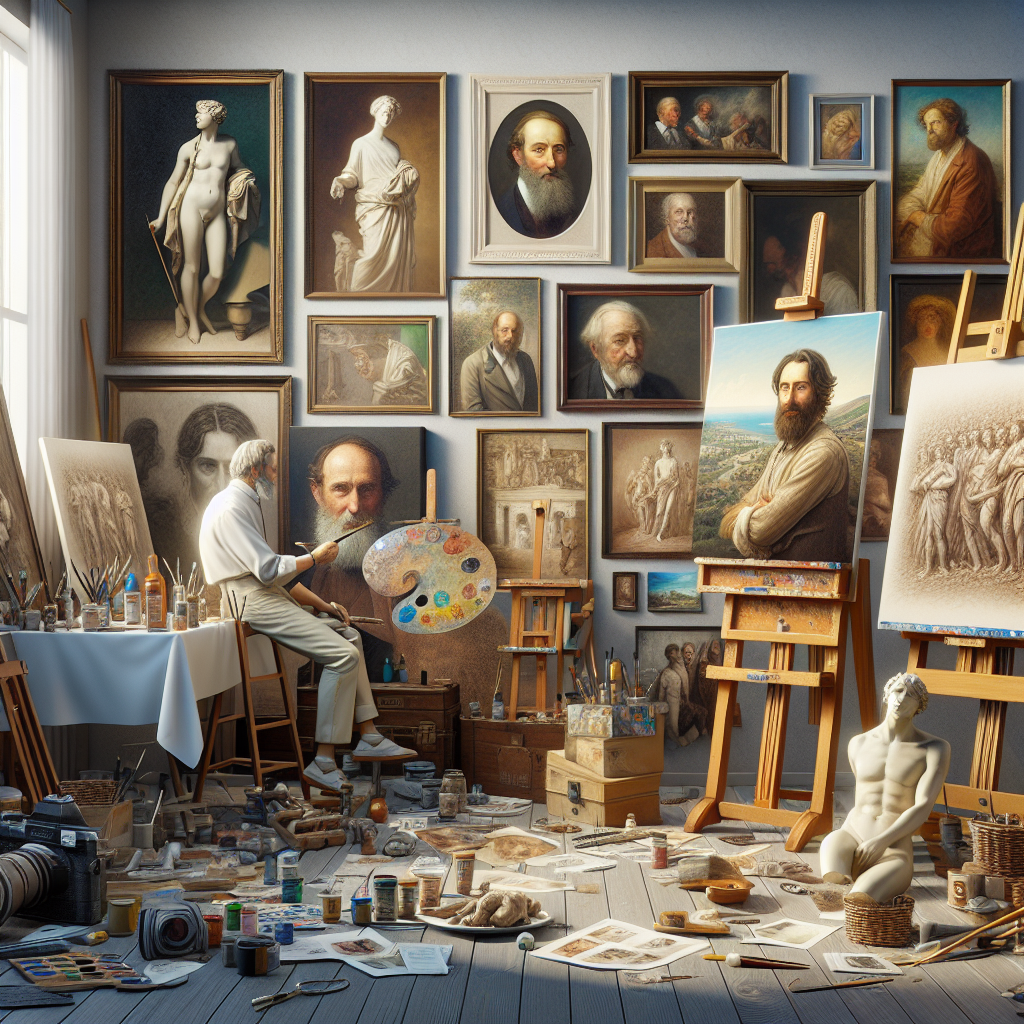Imagine stepping into a vivid, vibrant world where history and modernity intersect through the striking strokes of a paintbrush. This is the world shaped by Simon Kozhin, a distinguished Russian artist whose colorful canvases continue to capture global attention. Born in 1979, Kozhin embarked on a creative journey that has taken him from the bustling art scene of Moscow to exhibitions around the world. Between the echoes of imperial Russian glamour and the pulse of contemporary society, his work invites admiration and reflection.
Kozhin’s artistry is more than just color on canvas. His works transport viewers to a realm where landscapes become emotions and portraits are narratives, colliding the ancient and the alive. Growing up amidst the vast Russian landscapes, his exposure to nature’s grandeur can be seen influencing his work. The sprawling fields and dramatic skies feature prominently in his paintings, acting as a magnificent backdrop against which human stories unfold.
Starting his art education at the Moscow Academic Art Lyceum of the Russian Academy of Arts, Kozhin’s artistic prowess caught the attention of many. By infusing academic rigor with free-spirited creativity, he developed a distinctive voice that is both rooted in classical tradition and modern expression. His fascination with European art, combined with his Russian roots, lends his paintings a unique blend of East meets West.
People often describe Kozhin’s paintings as a time machine back to older, more poetic days. For example, one of his notable works, ‘In the Park,’ catches a classic realm with a certain serenity that feels ghost-like in today’s fast-paced world. It’s almost as though he’s reminding us of slower times, pulling us into a nostalgic reverie we didn’t know we needed. There's a juxtaposition at play: while some argue that such glorification of the past can deter from pressing forward, many find comfort and value in these moments of reflection.
An examination of Kozhin’s work doesn't shy away from controversy. A politically liberal perspective may engage critically with the celebration of historical landscapes and imagery, questioning its stance in the ever-evolving sociopolitical narrative. As the world grapples with ones' identity within a sociology-laden framework, Kozhin acts as a thoughtful mediator between the realms of art and reality.
Amidst the contemplation of themes and historical depictions, Kozhin exhibits versatility by traversing different mediums and styles — from oils and watercolors to drawing and lithography. This constant evolution within his work is an endeavor to communicate with a modern audience while honoring the registration of classic allegory. His genre’s diversity highlights the contrast between contemporary issues and an innate appreciation for artistic heritage.
One of the most inspiring aspects of Kozhin’s work is the emotional energy captured on his canvases. Each piece demands an emotional response, whether it's the deep azure of a seascape or the serene melancholy of a sunset. This quality has garnered him a place among both art collectors and casual admirers. But, Kozhin’s work is not only about aesthetics; it is transformative. It challenges our perceptions and assumptions about art as something that purely beautifies rather than meaningfully critiques modern culture.
Many of Kozhin’s exhibitions span geographies, from his homeland Russia to galleries in the United States, China, and beyond. These showings, and the discussions they provoke, provide an opportunity not just to enjoy his creations but also to consider their cultural implications. As audiences around the globe engage with his narratives, he serves as a bridge across cultural divides, visual discussions weaving connections through shared human experience.
The power of his paintings lies not only in what you see but also in the dialogue they create. Some may argue that focusing on beauty diverts from contemporary issues needing urgent attention. However, Simon Kozhin’s work argues that art can act as a reflective mirror that instigates discussion about those vital issues, linking the past with the present and looking toward the future.
For a generation that faces both tumult and triumph on socio-environmental fronts, Kozhin’s art provides solace and contemplation. The young and digitally animated are prompted to pause, reflect, and to observe that beauty around them persists even amidst daily chaos. Those familiar strokes remind us that sometimes we could learn from the past and appreciate what exists right in front of us.
Whether you are a passionate Gen Z consumer of art or simply one who got lost in the timelines of Instagram, Simon Kozhin’s artistry offers a sanctuary. Here, art is not just something to be seen but something to be felt, questioned, and cherished for both its aesthetic and symbolic depth. It is a testament to art’s timeless potential to connect us, to provoke thought, and to help us make sense of the world swirling around us.

